Kumano Kodo Nakahechi Route (Tips + My Experience)
Preface: I hiked the Nakahetchi route in July of 2023. I chose to do it in 4 days / 5 nights, starting in Kii Tanabe and ending in Kii Katsura. We took a local bus to the start of the trail and from the end to Kii Katsuura, but walked the ~70km in between. This guide will be based on my experience, plus what I’ve learned researching and talking to people along the way.
Winding through the Kii Peninsula, the Nakahechi Route connects Kii-Tanabe, on the western coast, to the Kumano grand shrines at Hongu and Nachisan, and finishes a Nachi Falls (a wonder in itself). With a history dating back over a thousand years, this trail was traversed by Japan’s imperial family, and today it welcomes travelers from around the world seeking a unique and inspiring adventure.
The hike itself takes you through cypress and cedar forests, across 3 main mountain ranges, and along crystal-clear rivers and swimming holes.
My favorite part of the Nakahechi Route is the immersion into rural Japan. Small, isolated villages offer warmth and hospitality, inviting visitors to fully experience the region’s rich culture.
In this blog post, I’ll share everything you need to know before embarking on the Nakahechi Route of the Kumano Kodo.
Table of Contents
Key Takeaways
Read More: You can read my complete guide to the Kumano Kodo here or my tips on booking accomodation here

Kumano Kodo Trail Map
Celbrate your Kumano Kodo experience with this minimalist trail map of the Nakahechi Route (designed by me!) – showing all the key locations, start and end points, and trail stats at the bottom 🙂
History and Significance
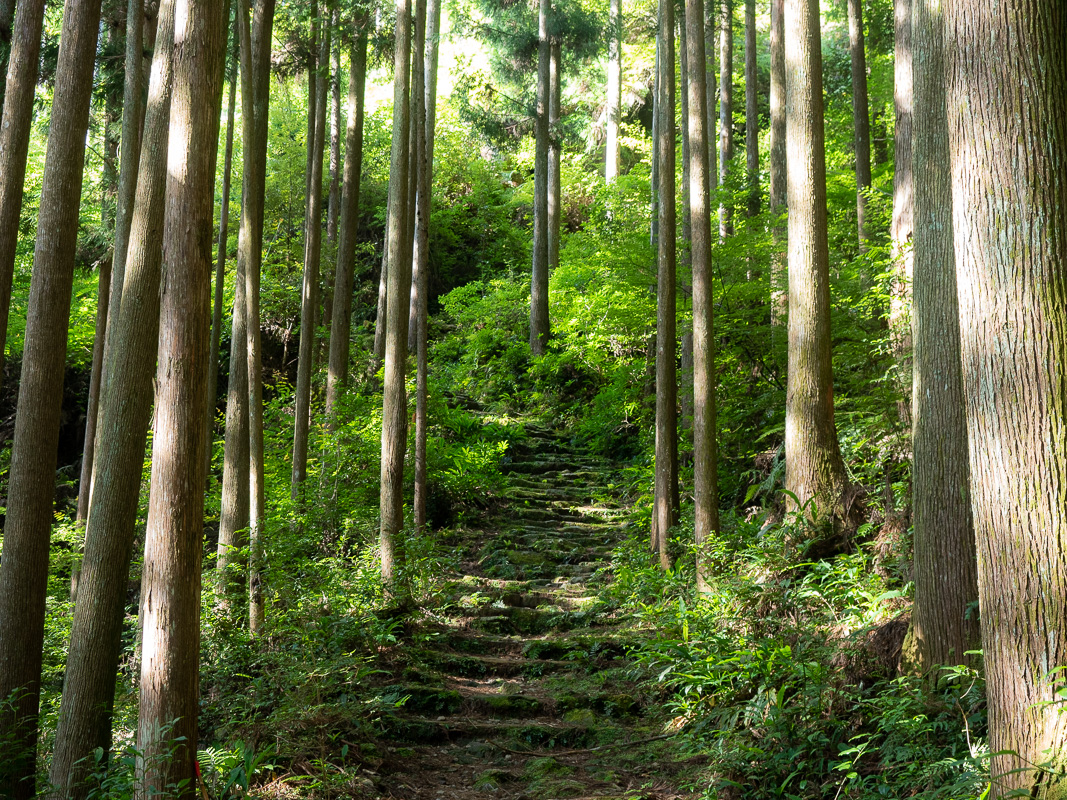
The Nakahechi path, often referred to as the “Imperial Route,” was frequented by emperors and nobles from the 10th century onwards2. This famous route takes pilgrims through breathtaking mountain landscapes and sacred sites that are integral to Japan’s spiritual heritage.
Two of the major religions in Japan, Shinto and Buddhism, had a significant influence on the development and reverence of the Kumano Kodo, including the Nakahechi route3. Spiritual seekers would embark on this pilgrimage in search of purification, seeking to encounter the “Three Grand Shrines of Kumano”.
Today, this mountainous pilgrimage is still popular among both locals and foreign visitors, and I can clearly see why. The Nakahechi route not only introduces you to Japan’s rich religious history and stunning natural beauty but also offers a unique sense of connection with those ancient pilgrims that walked the trails centuries ago4. Walking the Kumano Kodo, even for just a few days, was a truly unforgettable experience of history, nature, and spirituality.

Kumano Kodo’s Connection to Camino de Santiago
Interestingly, the Kumano Kodo shares a unique connection with another famous pilgrimage route, the Camino de Santiago in Spain. In 1998, they became sister trails, recognizing their shared cultural and spiritual significance. Both routes have attracted pilgrims for over a thousand years, making them historical treasures.
Tip: By completing the kumano kodo and at least 100km of Camino de Santiago you can get stamped a ‘dual pilgrim’. Look out for the stamp book at the Kumano Kodo visitator centres and make sure to get the Kumano stamp in the Hongu Taisha shrine to be elegable for your dual pilgrim certificate.
Getting The Dual Pilgrim Certificate
For those who complete both the Kumano Kodo and the Camino de Santiago pilgrimage routes, there’s a special reward: the Dual Pilgrim Certificate. You’ll need to get the stamp at hongu taisha to be able to get your Dual Prilgrim certificate.
(More on the Dual Pilgrim certificate in the article here)
Getting To The Nakahechi Trail.
The Nakahechi route begins at Takajiri Oji, where the Kumano Kodo visitor center is also located (across the road)
But your adventure actually starts much earlier, getting from central Japan down to Wakayama and eventually the start of the trail.
It’s a bit of a mission – so factor this into your planning
Kii-Tanabe, located on the western coast of Wakayama Prefecture, is accessible by express trains from Kyoto and Osaka 1. The ride takes 1.5 – 3.5 hrs depending on where you leave from and what train service you chose
| Starting Point | Destination | Approximate Time |
|---|---|---|
| Kansai Airport Osaka | Kii Tanabe | ~2hrs |
| Osaka Central | Kii Tanabe | ~2hr 20min |
| Kyoto Central | Kii Tanabe | ~3hrs |
What I Did: We flew into Kansai Airport and wanted to go straight to Tanabe (and we’re glad we did. Tanabe was a cute beach town, which was really charming). We took the Airport train from Kansai station to Hineno (2 stops). Then we got off and purchased a limited express ticket on the Wakayama line to Kii Tanabe Station.
Note: These are actually 2 tickets. You need to buy the base ticket, and then also reserve a seat.
Tip: You definitely want the limited express train. There’s also the option of taking local trains but these go much slower and stop at every station along the way (and there’s a lot!). Pay a little extra and you’ll have at least 90 minutes off your journey.

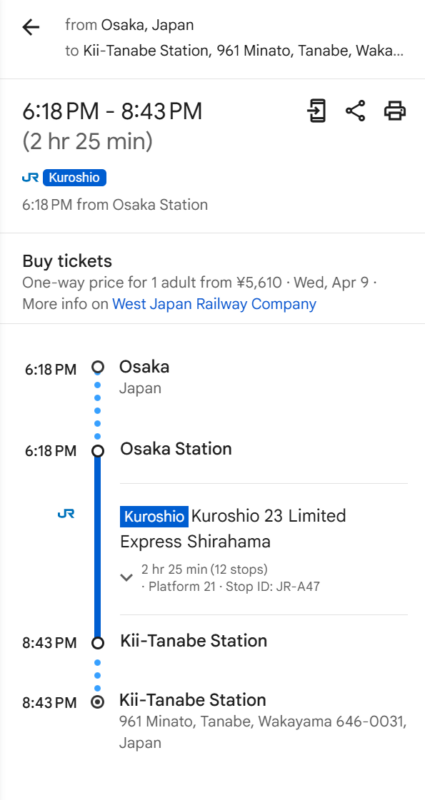
Nakahechi Route Overview
The Kumano winds through the beautiful landscapes, connecting the three grand shrines of Kumano: Kumano Hongu Taisha, Kumano Hayatama Taisha, and Kumano Nachi Taisha. These shrines, collectively known as the Kumano Sanzan, are the focal points of the pilgrimage.
As I set off from Kii-Tanabe, my first encounter on the Nakahechi route was Takijiri-Oji, a trailhead approximately 15km west of Tanabe. This is where most pilgrims begin their journe and is where the Kumano Kodo visitor centre is located.
Walking along the trail, I came across several small, isolated villages that offer traditional lodgings for (which you can book here) These are called ryokans or japanses inns. They have an old world charm about them, which is helped by the etiquete required when you’re staying at one.
This was my favourite part of the whole experience!

- Day 1: Take a local bus from Kii Tanabe to the trailhead in Takijiri Oji. Sign in to the visitor centre and hike approximately 13km / 5hrs to Chikatsuyu
- Day 2: Hike aproximatly 25km or 8-9hrs from Chikatsuyu to Hongu Taisha or Yunomine Onsen
- Day 3: Continue 13.5km / 4.5 hrs to Koguchi
- Day 4: From K walk 14.5km to Nachi Falls, then take another local bus from the trail end down to kii katsura on the coast
| Day | Description | Distance To Walk | Time Taken | Notes |
|---|---|---|---|---|
| Day 0 | Travel Day | |||
| Day 1 | Hiking Day | 13km | 4.5 hrs | The warm-up |
| Day 2 | Hiking Day | 25km | 8-9hrs | Longest Day |
| Day 3 | Hiking Day | 13.5km | 3.5-4hrs | The ‘rest’ day |
| Day 4 | Hiking Day | 14.5km | 5-6hrs | Most challenging day |
| Day 5 | Travel Day |
One of my other favorite parts was reaching Hongu – the spiritual heart of the Kumano Kodo trail. Here, I visited Kumano Hongu Taisha, one of the grand shrines, nestled in lush green surroundings.
From Hongu, the Nakahechi route continues eastward through the mountains, eventually leading to the other grand shrines: Kumano Hayatama Taisha in Shingu and Kumano Nachi Taisha near the coast.
Overall, I highly recommend this adventure for those looking to connect with Japan’s spiritual and cultural past on a deeper level. The hike is not too challenging – but there is a lot of hill climbing with around ~800m of elevation gain each day. The rivers are gorgeous, the food is incredible, and the accommodation is very very cute.
Read more: for a full write up of the route and what to expect on the hike, check out this article
Getting Back Again
Once finished the route, you’ll end up at one of two trailheads. The Nachi Falls end (most common) or the Kumano Hayatama Taisha.
(we picked the route to Nachi Falls / Nachi Taisha as it’s the most poulatar, and the grand shrine looked stunning!)
From there you’ll take a bus into the nearest main town which is Kii Katsuura – a small fishing village, but also home to the 2nd largest tuna port in Japan outside of Tokyo (well worth a visit).
The bus from Nachi Falls to Kii Katsuura cost 630 Yen and took about 45 minutes.

We stayed the night here (I would recommend you do the same or even stay two nights!) it’s a cute town and one of the highlights of my trip. You can visit the tuna market and enjoy the nearby onsens.
Next, you’ll probably want to make your way back to Osaka, Kyoto or Kansai Osaka Airport. The most common route is back along the coastal route, and you’ll pass Tanabe on your way.
Add an extra 90minutes to the time it took to get you to Tanabe at the start of your hike

Key Locations along the Nakahechi Trail.
So we’ve talked about getting to and from the route, so now let’s dive in to the main stops you’ll make along the way.
Takajiri Oji
When I first started my journey on the Kumano Kodo Nakahechi route, I was amazed by the beauty and serenity of the places it takes you through. The trail starts from Kii-Tanabe on the western coast of the Kii Peninsula and winds its way eastward, crossing the Kii Mountains before reaching the Grand Shrines of Kumano at Hongu and then Nachisan.
Takahara
One of my favorite stops along the way was Takahara – a small village nestled high up in the mountains, offering stunning views of the surrounding landscape. The village provided a welcoming stay for the night before I continued on my pilgrimage.
As I made my way through the pilgrimage trail, passing by sacred sites like Tsugizakura, I couldn’t help but stop and marvel at the natural beauty around me. Walking alongside the river, the sound of flowing water became a soothing backdrop to my journey.
Chikatsuyu
For most, this will be your first night’s stay along the hike. This cute town only has one cafe, one convenience store and a couple of shops. Although there is an art gallery which is worth checking out if it’s still open when you arrive!
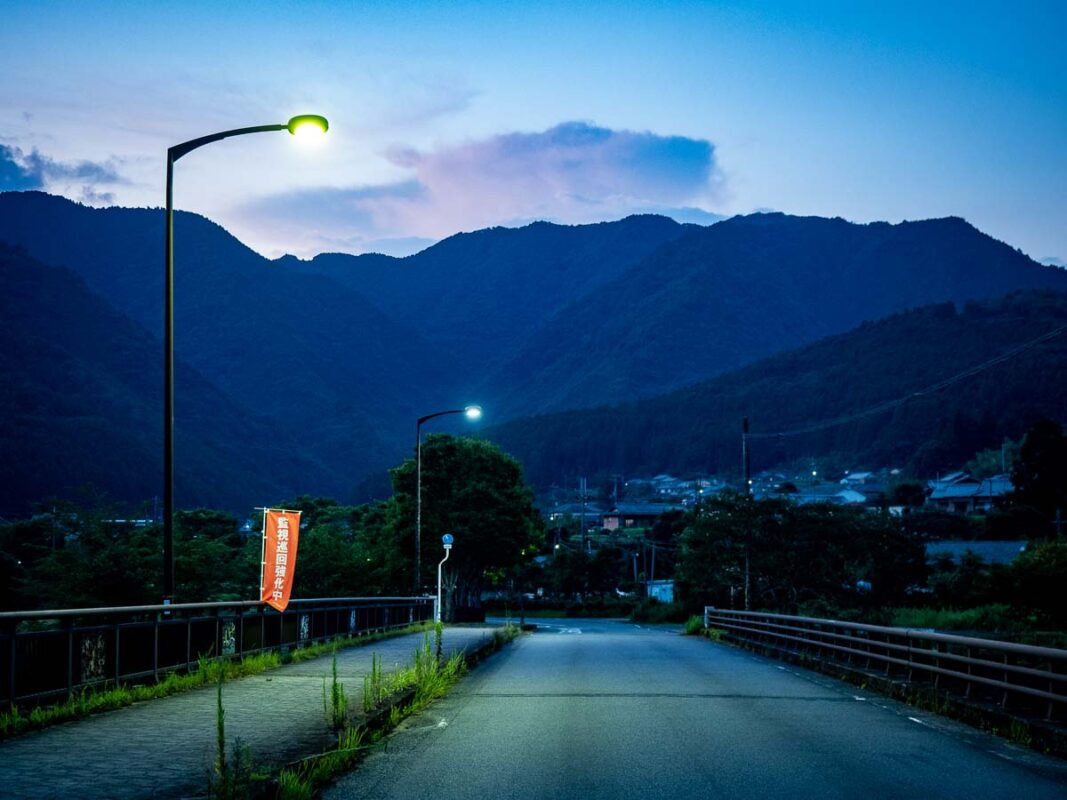
Yunomine Onsen
A significant highlight of my trek was reaching the Omine mountain range, where I found myself surrounded by the lush forest and beautiful landscapes that define the Kii Peninsula. Here, I visited the ancient Yunomine Onsen, a hot spring believed to have healing properties. Soaking in the warm waters was the perfect way to relax after a long day of walking.
While on the Nakahechi route, I also explored the sacred Koyasan, a mountainous area known for its temples and monasteries. This place truly captured the essence of the pilgrimage experience, resonating with the cultural and spiritual atmosphere of the Kumano Kodo.
Hongu
As my journey neared its end, I finally reached the Grand Shrines of Kumano. The presence of these majestic shrines, located in areas like Hongu and Nachisan, filled me with a sense of reverence and accomplishment. I also paid a visit to the enchanting Nachi Falls, a magnificent waterfall that further added to the otherworldly beauty of the region.
Koguchi
This small town is nestled along a river. You’ll find a small convenience store here, an ATM (that’s only open for a few hours a day) and a couple of restaurants that are equally as sporadically open.
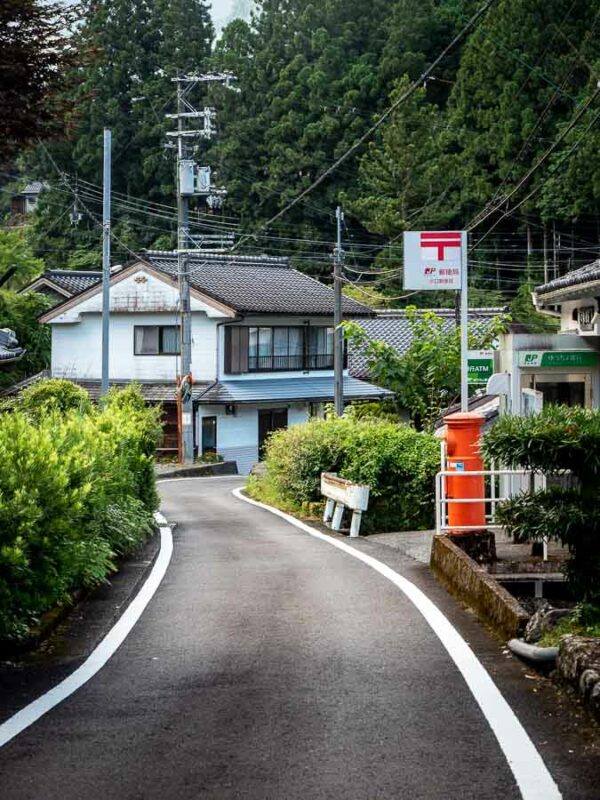
Nachisan
Getting to and from the Nakahechi route was a breeze, thanks to the accessibility from cities like Osaka and the coastal town of Kii-Katsuura. If you’re seeking some relaxation after completing the pilgrimage, I highly recommend visiting the coastal resort town of Shirahama to unwind and celebrate your achievements.
Timing Your Visit
The best time to walk the Kumano Kodo is during the Japanese spring (March to early June) and autumn (September to November). These periods provide more mellow temperatures, and you get to experience the famous spring blossoms or vibrant fall colors (depending on the season). Aim to miss the wet season of June, and the scorching heat of July/August.
I hiked the Nakahetchi route of the Kumano Kodo in July 2023 and it was unbearably hot (I’ve never sweat so much in my life). Humid, 35-degree days make even climbing a flight of stairs a challenge – let alone a mountain range.
Choosing Your Accommodation
One of the highlights of my Kumano Kodo trip was the accommodation.
There aren’t any fancy hotels or resorts, but instead, there are cute traditional family-run guesthouses. They offer warm and authentic hospitality, and a chance to immerse yourself in the local lifestyle, and best of all INCREDIBLE FOOD.
But with options between Minshukas, Ryokans, Hotels and Hostels.. and different offerings between Kumano Travel and Booking.com… what is the best option, and which ones should you avoid?
You’ve got 2 main booking ‘pathways’. Kumano Travel for booking local ryokans and minshukas right on the trail (you finish your days walking and arrive at the door of your stay). Or, booking.com for booking more western style accommodation like hotels which are typically off trail (you’ll need to catch a bus to and from before and after your day’s hiking).
There’s a bit to this so i wrote a full guide to booking Kumano Kodo accomodation here.
For a full list of recommendation on where to stay – checkout this article here
Packing and Preparation
If you pack for your Kumano hike the same way you prepare for any other hike, I guarantee you’ll pack a bunch of stuff you never need, and miss a few things you do.
(I know, because I did it)
below is a short list of what items I found to be essential for your Kumano Kodo journey.
Read More: This topic needs a blog post of its own, so check out my guide on what to pack for your Kumano Kodo hike.
- Kumano Kodo Map: Grab the map from the visitor centre before your hike. its really good!
- Footwear: Sturdy hiking boots or trail runners that are broken in to avoid blisters and discomfort. Bring moisture-wicking, quick-drying socks.
- Clothing: Mix of short and long-sleeved shirts, merino wool tops or base layers, leggings, and hiking shorts. Choose materials that dry quickly and offer enough stretch for unrestricted movement.
- Rain jacket and waterproof pants: Lightweight and waterproof outer layers to protect against rain and cooler temperatures.
- Backpack: Lightweight, yet sturdy bag with padded straps and good back support. Make sure it is spacious enough to fit everything without feeling too bulky.
- Hiking pole: Provides stability and takes some of the pressure off legs.
- Hydration: Water bottle and dry bag to store it and other essential items safely.
- Pack cover: Waterproof cover for backpack.
- Camera: Extra memory cards and a durable camera case to protect it.
- Toiletries: Toothbrush, toothpaste, shampoo, conditioner, body wash, razor, and small pack of tissues.
- Portable charger: Keep phone charged for navigation and capturing memories.
- Pocket Wifi / SIM Card: Stay connected with loved ones and use online maps if needed.
- First aid kit: Adhesive bandages, gauze, pain relief medication, and any personal medication. I packed tape to help cover any blisters as they formed.
- Cash Money: Bring enough cash for the whole trip, as there are few ATMs along the way.
- Swimming towel: Keep a lightweights travel towel handy.
- Insect repellent: Protect against leeches, centipedes, and scorpions.
- Sunscreen: SPF 50+ sunscreen for the long hours in the sun.
- Quick dry clothing: Breathable and stretchy clothing to prevent chafing.
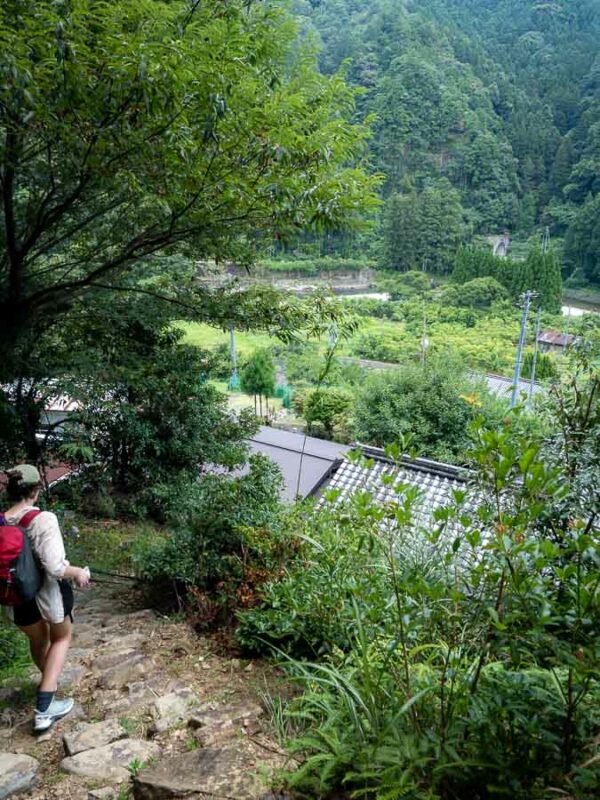
Kumano Kodo Travel Tips
Before you head off to tackle the Kumano Kodo Nakahechi route, I thought I’d share a few tips to make your journey even more enjoyable. From my own experience, these pointers proved to be really helpful.
- First, you should definitely pack clothes suitable for a mountain environment, as the weather can be quite changeable. Waterproof gear, comfortable hiking shoes, and layered clothing will certainly make your trek more manageable.
- When you’re out on the Nakahechi route, you won’t want to miss the opportunity to experience an onsen, a Japanese hot spring bath. They provide a perfect way to relax after a long day of hiking. One particularly special onsen I visited was Yomine Onsen, tucked away in the mountainside, which is not only picturesque but was a heavenly balm for my tired muscles.
- In addition to onsen visits, take the time to explore the nearby villages and secluded areas, such as Shima or Koyasan. They offer both history and serenity, enhancing your understanding and appreciation of the pilgrimage route.
- While hiking the trail, you’ll also want to keep an eye out for the stunning Nachi Falls. As the tallest waterfall in Japan, it adds a breathtaking natural wonder to your trek and makes for a great photo opportunity.
- Lastly, remember that you’re hiking a UNESCO World Heritage site. As such, it’s essential to be conscious of your impact on the environment. Stick to the designated paths and honor the sacred nature of this ancient pilgrimage route.
Have a fantastic time exploring the Kumano Kodo Nakahechi route, and I hope these tips help you make the most of your journey.
Luggage Transfer Service
Japan has everything on tap – from vending machines for cooked wagyu beef to robots that serve you sake.
Of course, they’ve figured out a way to make hiking easier too!
One way to lighten the load, and make the experience a whole lot more enjoyable is by utilizing their baggage transfer service. Or, like we did, you can get your ‘rest of Japan’ luggage sent to the very end so you only carry what you need for the 4-6 days of hiking.
- There are two main companies offering luggage transfer services around the Kumano Kodo route; Kumano Travel and Yamato. There are also a few others I’ll mention in this article.
- Kumano Travel will only deliver if you’ve booked the accommodation through them.
- Yamato (the national delivery service) is available from 7-Eleven and Family Mart and can deliver to most Ryokan/Minshukens you’ll stay at.
- It costs roughly 15 USD per piece of luggage, per destination.
What I Did: I hiked the Kumano Kodo in July 2023 and definitely underestimated the physicality of the trail. It was peak summer – circa 35 degrees – and the thought of carrying a full 70L hiking pack was not sounding like much fun. We opted to have our ‘rest of japan’ luggage taken from Tanabe (the start of the track) to Kii Katsura (The End). That way we only had to carry exactly what we needed for 5 days hiking and nothing more..
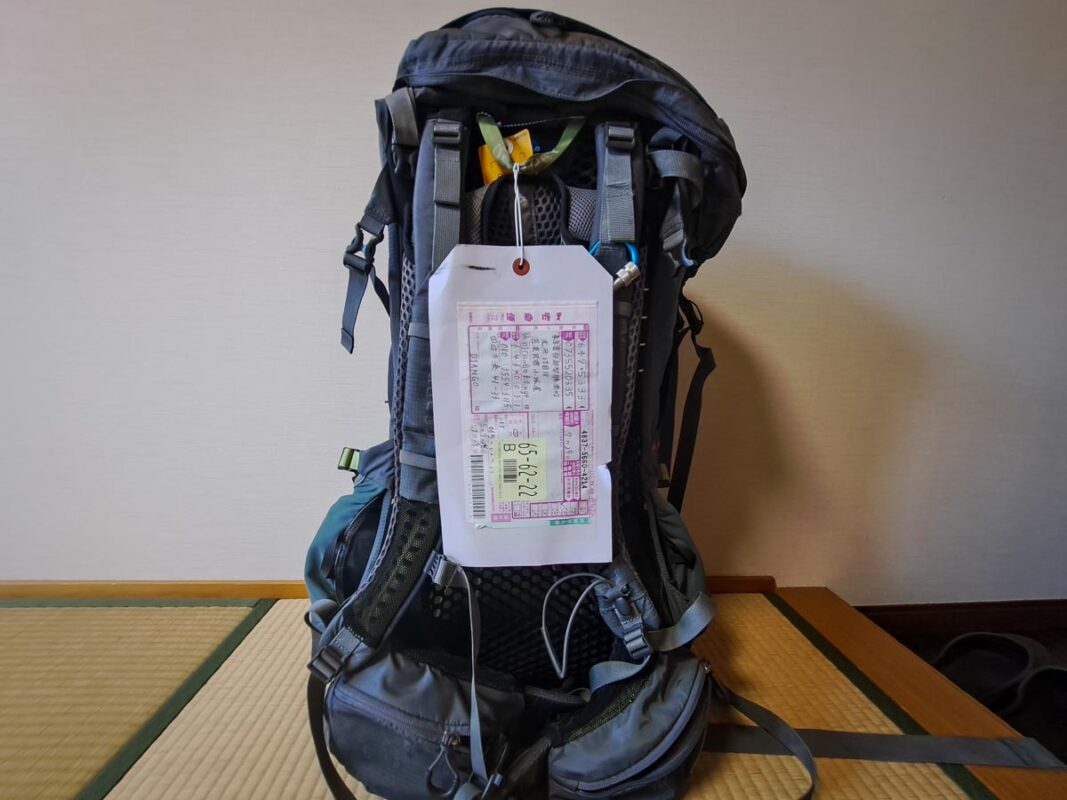
Frequently Asked Questions
Q. How long does it take to complete the Nakahechi route?
It typically takes me around 4-6 days to complete the Nakahechi route of the Kumano Kodo pilgrimage trail. This time frame allows me to fully enjoy the trail’s natural beauty and historical sites while maintaining a comfortable pace.
You’ll also need to allow a day each side for travel so you’ll need a minimum of 6 days to do the Nakahechi route of the kumano kodo.
Q. Which itinerary is recommended for the Nakahechi route?
I usually recommend a 4-day itinerary for those fitter or with more hiking experience, and a 5-day itinerary for those looking to take their time and enjoy a shorter ‘rest day’.
- 4 Day: Starting from Takijiri-oji, I walk to Chikatsuyu or Nonaka-no-shimizu area on the first day, then journey to Yunomine Onsen or Kawayu Onsen on the second day. On the third day, I make my way to Hongu Taisha Shrine before heading to Koguchi on the fourth day. Finally, I hike to Nachi Taisha on the fifth day. Note day two is a big day, with 25km of walking.
- 5 Day: Starting from Takijiri-oji, I walk to Chikatsuyu or Nonaka-no-shimizu area on the first day, then journey to Yunomine Onsen or Kawayu Onsen on the second day. On the third day, I make my way to Hongu Taisha Shrine before heading to Koguchi on the fourth day. Finally, I hike to Nachi Taisha on the fifth day. This itinerary allows me to fully enjoy the trail and take breaks at key points.
Q. Is a self-guided tour possible on the Nakahechi route?
Yes, I’ve hiked the Nakahechi route on a self-guided tour, and it’s quite a rewarding experience. This way, I can set my own pace, choose my accommodations, and explore the trail at my leisure. The trail is well-marked, so I don’t have to worry about getting lost. However, I do recommend being prepared and having some prior hiking experience.
There are helpful signposts along the way sharing the historical significance of each place (in both japansese and English) and the guide book from the visitor centre is also packed with information
Q. Where to stay while trekking the Nakahechi route?
Along the Nakahechi route, there are various accommodations that cater to us pilgrims. These include family-owned guesthouses called minshuku, ryokan (Japanese-style inns), and even some simple hotels. Booking is a bit of a ball-ache and you’ll need to make your reservation well in advance to secure a spot – especially during peak seasons.
Other options include camping at some of the many campgrounds along the way, or bussing out to one of the larger nearby towns to regular hotel-style accommodation (then bussing back the next day).
Tip: My favorite part of the whole experience was staying in the traditional ryokan and minshuka. The food was amazing and the cultural experience felt more authentic than what else I’d experienced in Japan. Sure, it costs a little more but I believe it was well worth it.
Read More: I’ve written a full guide on accomation along the Kumano Kodo Nakahechi route here.
Q. What is the elevation profile for the Nakahechi route?
The elevation profile for the Nakahechi route varies throughout the trail. Some sections are relatively flat, while others involve steep climbs and descents. The highest point is around 850 meters (2,788 feet) in elevation and is climbed in less than 5km (3.5mi) so it’s pretty steep. This can be a bit challenging, especially if you’re not used to hiking in mountainous areas.
For example, on the hardest day you’ll complete 1260m of elevation gain, 830m of elevation loss, and walk a total of 15.5km
Q. What is the historical significance of the Nakahechi route?
The Nakahechi route is part of the Kumano Kodo pilgrimage trail and has been traveled by Japanese emperors, aristocrats, and common people for over 1,000 years. Its historical significance is deeply tied to Japanese spiritual beliefs and cultural practices, making it a unique, enriching experience as I walk in the footsteps of pilgrims who came before me. Nakahechi route is also part of UNESCO World Heritage sites, further highlighting its importance and value as a spiritual and cultural trail.
Kumano Kodo Travel Planning Cheatsheet
🚑 Should I buy travel insurance for Japan?
100% YES! — Japan has “free” healthcare but it’s only for citizens! Tourists need travel insurance in case anything happens on your visit. Also be aware many policies won’t cover hiking as it’s a high risk activity! (that’s right, check the t&c’s on your complimentary credit card insurance)
I highly recommend World Nomads as you can get specific add-ons for the crazy activities you’re doing – and starts at just $7 a day!
🏩 What’s the best way to book my Kumano Kodo accommodation?
Your only realy two options here are Kumano Travel and Booking.com. Its a complicated process so I wrote this guide here on the best kumano kodo accomodation options
If you don’t want to figure it all out (it’s meant to be a holiday after all) you can book a package tour. Here are my recommendations for both guided and self-guided.
💸How do you pay for things in Japan?
Japan may have flying robots.. but they also still use cash! So you’ll want to get some folding tender out from an ATM when you land. EFTPOS / Debit / Credit Card and Paywave (contactless payments) is common at bigger businesses but small bars, and street vendors want cash.
I personally use a Wise debit card for all my international money needs as they only convert the funds when you make payment, plus they offer a much better spread (margin on the true exhange rate) than the banks do. They work in all Japanese ATMs I tried.
🚙 Do you need to rent a car in Japan?
I wouldn’t reccommend it — Transport in Japan is expensive whatever mode you chose, but fortunalty the publc transport system is out of this world in terms of both freqency and coverage. If you are heading to a lot of off the beaten track places, then you may want a rental. I use Discover Cars to find the cheapest rates on rentals cars and remember you can save money if you avoid picking up at the airport.
🚆 What about the JR Rail Pass?
We didn’t – but it depends on the length and itenirary of your trip. The JR Pass is expensive (and just went up in price again!) and if you’re walking the Kumano Kodo you wont need it for probably 6 days straight anyway.
Do the math, but in most cases buying the train fares you need, when you need it will work out more afforably overall – and give you more flexibility (as the JR Pass doesn’t cover all lines)
📲 How do I get internet/data/wifi in Japan and on the trail?
This one needs a whole nother article, but the short version is;
- local SIM cards are cheaper but generally require a fixed term contract (not practical for people visiting)
- Tourist ‘short stay’ SIMs are a bit more expensive but will give you plenty of data while your visiting and are best for solo travelllers.
- If you’re travelling as 2 or more people, renting a pocket WIFI unit from the airport is the most economical option – Works out cheaper than getting two tourists sims
- Use a travel eSIM like Saily or Airalo. This works from the moment you land is is SOOOOO much easier than trying to pick a data pack in japanese. It also gives you connectivity across neighbouring asian countries if you buy a regional sim! TIP: I used to use Airalo but now find Saily a much better product – you can get 5% off with code SPECIAL5
✈️ What’s the best site to buy flights to Japan?
For finding cheap flights, I recommend Skyscanner. Once you find the flight you’re looking for, I’d then suggest booking directly with the carrier (even if it costs a few $$ more than with one of the agreggators/agencies).
💧Can you drink the water on the Kumano Kodo?
Yes — Japan is very clean. In all townships you’ll pass through and stay along the Kumano Kodo the tap water is drinkable. If you want to drink water from the rivers and streams you generally can but should do so at your own risk. ALWAYS follow best practice and drink from fast flowing water as far up stream as possible. I drank the water and was fine.. but i’d generally recommend a Brita Water Bottle for rehydrating on the trail safely.
🎫 Do I need a visa for Japan?
Likely Not — Japan now recognises 70 countries as ‘visa exempt’ for short term stay. So if you’re a US, UK, NZ, AU and EU passport holder you don’t need a Japansese visas. However, some other countries do (check here!). And if you plan to stay for more than 90 days (an average tourist visa length), you will need to look into the Japanese working holiday visa scheme, or the new Digital Nomad visa scheme.
Footnotes
- Kumano Kodō – Wikipedia ↩
- Nakahechi – The Imperial Route – Walking the Kumano Kodo ↩
- Kumano Kodo: The History, What to See, and How to Start Your Hike – VOYAPON ↩
- Kumano Kodo Nakahechi Trail Guide: Hiking the ancient pilgrimage route ↩
- Inside Kyoto – Kumano Kodo Walking Trail Guide with Maps ↩
- One Step Then Another – Stages and Maps for Walking the Kumano Kodo ↩

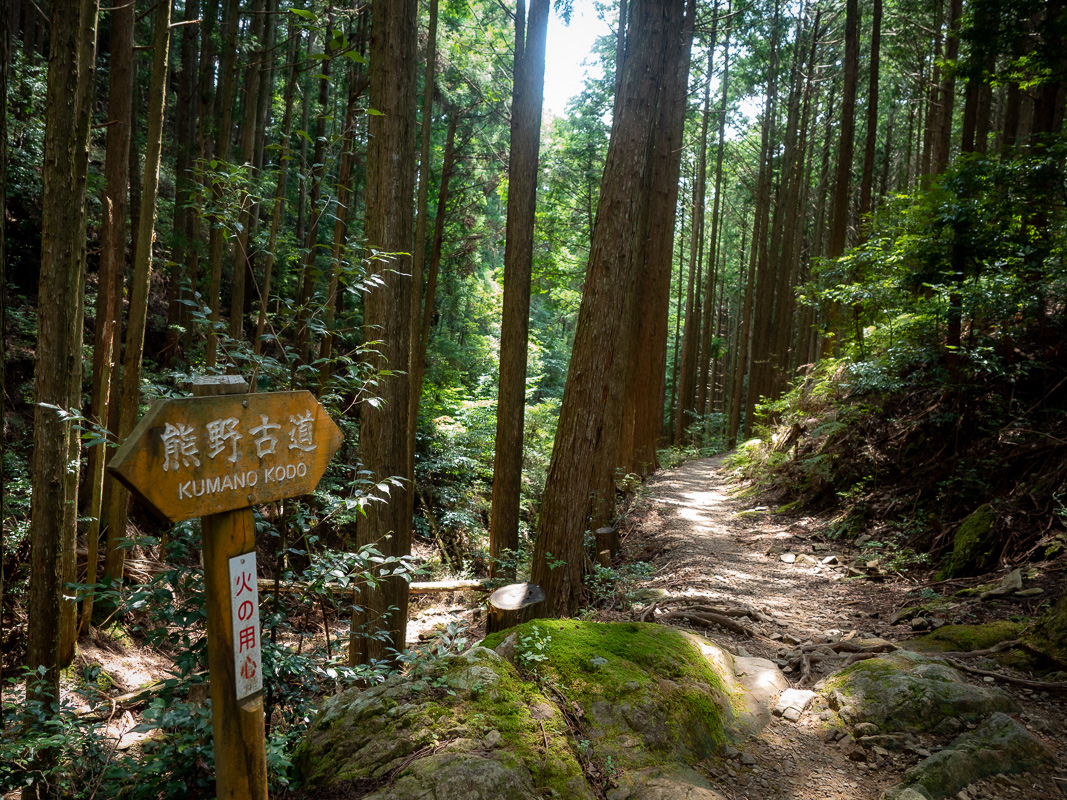


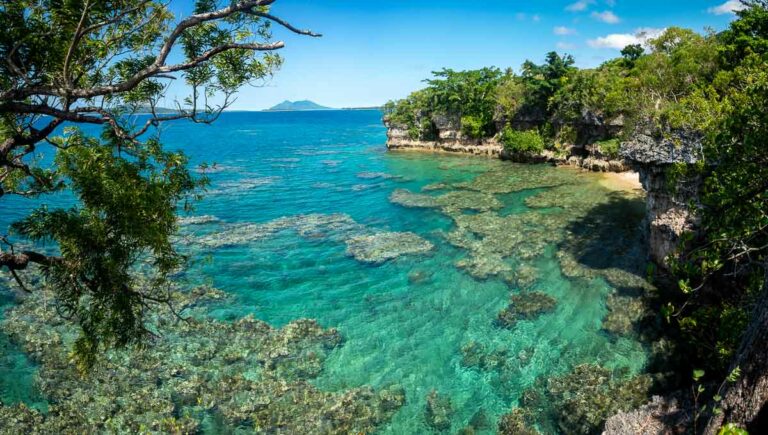
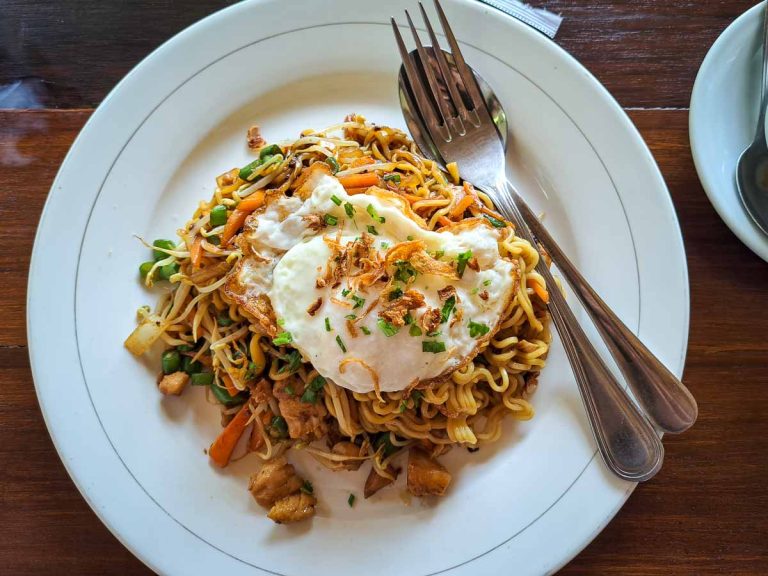


Really awesome guide thank you so much for writing it! Just a note, your “4-day” and “5-day” itinerary read pretty much the same (see: “Q. Which itinerary is recommended for the Nakahechi route?).
Thanks Tristan, your travel guide on the Kamano Koto pilgrimage walk was just what i was looking for. well laid out and very informative. now i am really looking forward to my hike. did Machu Picchu trek last year, this one looks a good a challenge for the old 68 year snoozer. Thanks again
So glad to hear you found the info helpful 🙂
Very nice and helpful article. I completed the Camino Santiago last year and learned about this one while there. Quick question – what is a good realistic daily budget for the Kumano Kodo? I know this can vary considerably, but how much should those 4 – 5 days cost more or less? Thanks
Hey, it cost me around $650 all up. Checkout this article where I break down the costs https://tristanbalme.com/kumano-kodo-cost-guide/